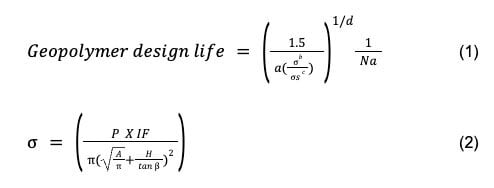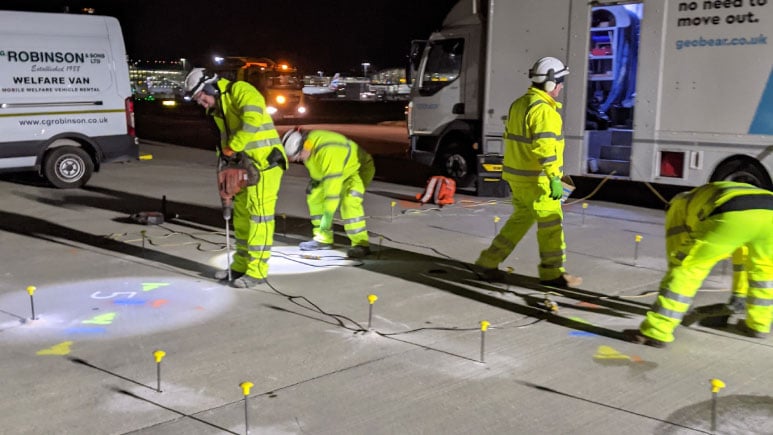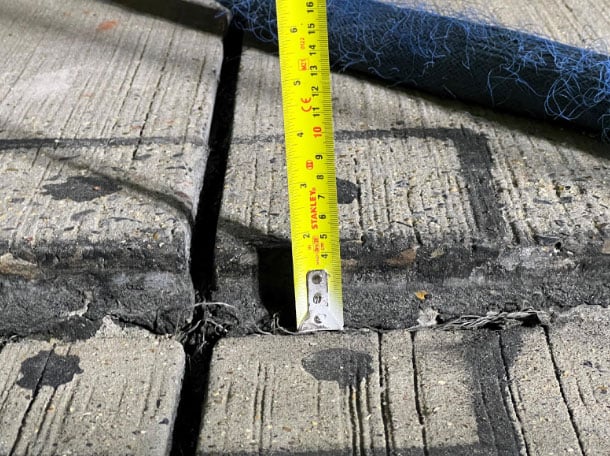
Airports
Challenge
Taxiway slabs at a major UK airport had settled up to 50 mm due to weak subgrade and water ingress, creating safety risks and requiring rapid remediation.
Solution
Geobear injected Type II geopolymer beneath 392 m² of slabs, restoring level tolerances, achieving >1 MPa compressive strength, and cutting carbon emissions by 46% — all in night shifts.

Up to 50 mm of settlement corrected to 0 mm
design life validated under cyclic aircraft loading
lower CO₂ vs. cementitious grouting
At one of the UK’s busiest airports, a number of airfield pavement slabs had settled excessively due to a combination of weak subgrade soils and drainage-related erosion. In some areas, settlement reached 50 mm, creating steps at slab edges and causing risks to aircraft taxiing between runways and stands.
Timely intervention was required. Traditional remediation methods, slab jacking with cementitious grout or full slab reconstruction, were rejected because:

The project presented three major challenges:
Variable settlement conditions: Four slab blocks across the taxiway had different magnitudes and directions of settlement, ranging from 5 mm to 50 mm. The settlement was concentrated at slab edges where sealant failure had allowed water ingress. Combined with dynamic aircraft wheel loading, this had led to sub-base pumping and erosion.These requirements ruled out cementitious grout and demanded a design capable of combining lift efficiency, structural strength, and durability.
Geobear’s engineering team carried out a detailed analysis of three different geopolymer formulations to determine the optimum balance between lifting efficiency, compressive strength, and design life.
The design life of the geopolymer was calculated using Geobear Design Life Model (GDL), see Equation 1, which was based on extensive laboratory cyclic loading testing and bespoke to Geobear’s geopolymers. The use of this model requires estimating the vertical stress generated on the geopolymer due to aircraft loading and was done using a Pyramid Load Distribution (PLD) simplified method, as shown in Equation 2, along with inputs from Jacobs and HAL related to aircraft loading and loading frequency. From the calculations it was found that Type III geopolymers had a design life that exceeded 60 years and then followed by 27 years and 12 years for Type II and Type I, respectively.

Where,
A: Wheel contact patch.
a,b,c,d: model coefficients.
: applied vertical stress on the geopolymer.
s: geopolymer compressive strength.
Na: number of applied loading cycles.
P: aircraft wheel loading.
IF: Impact factor to account for dynamic nature of the wheel load, typical value of 1.5 for taxiing aircrafts.
H: slab thickness.

Based on the analysis, it was concluded that Type II geopolymer would provide the most cost-effective and optimum design as it would be able to satisfy all the clients requirements along with the high lift efficiency. Type I geopolymer would provide the maximum lift efficiency, but cannot provide sufficient compressive strength and design life. On the other hand, Type III geopolymer would have the maximum compressive strength and design life but with low lifting efficiency. Therefore, Type II seems to provide a well-balanced design that provides sufficient compressive strength and design life while maintaining a high level of lift efficiency, hence it was selected for this application.

The project successfully re-levelled and stabilised all affected slabs:
Pre injection slab

Post injection

Get in touch with our expert team today and discover how Geobear can extend the life of your critical infrastructure assets.

